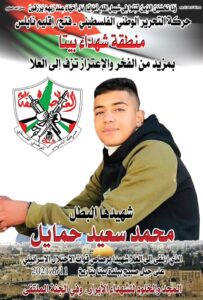- 299
- 305SHARES
Agence France Presse recently published an in-depth feature sanitizing the noisy Palestinian riots taking place at Beita as a unique grassroots effort, stripping them of their violent elements and ignoring their likeness to riots by the Gaza border. The article’s flaws are manifold, including the glaring failure to report the burning of a swastika inside a Star of David, a disturbing incident which drew the attention of the Israeli and Jewish press, but was universally ignored by the international mainstream media.
مشاهد من فعاليات الإرباك الليلي قرب البؤرة الاستيطانية في بلدة بيتا.
تصوير: عبدالله بحش#فلسطين pic.twitter.com/omvKCgrkkO
— شبكة قدس الإخبارية (@qudsn) August 14, 2021
Full of obfuscations, AFP’s Aug. 25 report, “Palestinians forge ‘grassroots’ campaign wildcat settlement,” begins:
Using laser pointers and noisy horns to torment Jewish settlers across the valley, Palestinians in Beita have set themselves apart from others demonstrating against Israel’s occupation of the West Bank.
But beyond attention-grabbing tactics, protesters in the Palestinian town near Nablus insist their weeks-long campaign against the wildcat settlement of Eviatar is distinct for another reason.
They describe it as a grassroots movement, not inspired or directed by Fatah secularists who control the Palestinian Authority in the West Bank, or their rivals from the Islamist Hamas that runs the Gaza Strip.
Among the article’s multiple blatant omissions is the fact that the Beita demonstrations are also characterized by the use of explosives and the burning of tires in addition to lasers and loud horns.
In addition, the article omits the striking case of the burning of a swastika combined with a Star of David, widely reported last month by multiple Israeli and Jewish media outlets, even as mainstream international media outlets completely ignored it.
In one incident, demonstrators burned a Star of David with a Nazi swastika within it. Palestinian protesters deemed the spectacle — roundly denounced on Israeli television as anti-Semitic — to be a way of comparing Israeli rule in the West Bank to Nazi Germany.
Fatah officials have occasionally shown up to provide symbolic support at the nightly protests, and some of those killed or wounded during violent clashes with Israelis have been Hamas activists. But local Palestinians say they have spearheaded the movement.
 (Mohammad Hamayel, the 15-year-old mentioned in the article who was killed during Beita demonstrations this past June, was pictured in a mourning poster affiliated with Fatah. CAMERA does not have information about Hamas activists killed in Beita riots.)
(Mohammad Hamayel, the 15-year-old mentioned in the article who was killed during Beita demonstrations this past June, was pictured in a mourning poster affiliated with Fatah. CAMERA does not have information about Hamas activists killed in Beita riots.)Israeli authorities have not yet determined who owns the plot, and are surveying the land over the next few months as part of the compromise which saw Evyatar’s residents leave the site. If Israel’s Defense Ministry determines that the land belongs to the state, it will be far easier to build an authorized Israeli settlement on the hilltop.
